“It was as if God had decided to put to the test every capacity for surprise and was keeping the inhabitants of Macondo in a permanent alternation between excitement and disappointment, doubt and revelation, to such an extreme that no one knew for certain where the limits of reality lay.”
One Hundred Years of Solitude, Gabriel Garcia Marquez
Perched primly atop the Hok-ki Shong hill, overlooking the mountains of eastern Nagaland, the little village of Nakshou, with a population of about 3,000 people, lies asleep on a Sunday morning, even as villagers slowly amble out of their homes to go to the local church.
Towering over the village like a guardian angel, the church’s green spire is rivalled in height and authority only by the tip of the curving hillock at the opposite end, atop which sits Major Havaldar, B Bumo, his cocked gun beside him. A village guard for the past 23 years, the 47-year-old is now the Head Commander of the village guard. This spot offers him a bird’s eye view. When the village was formed, no one knows exactly when, the Naga Hills were inhabited by warring tribes of headhunters fighting for land. Built at a vantage point on top of a hill, the village had a clear view of enemies approaching on either side. “No one could conquer this village,” Bumo states with pride. Beneath the village is a little moat filled with human skulls, remnants of the formidable valour of their forefathers who fought for this land with their blood.
This geographic isolation, which once was a boon for the Nagas, has today become a bane and the focal point of the upcoming Legislative Assembly elections, especially in the east, where a new movement for ‘Frontier Nagaland’ has grown strong.

The demand was first raised in 2010 by the Eastern Nagaland People’s Organisation (ENPO), itself formed in the 1990s in response to growing factionalism and infighting among tribes in Eastern Nagaland. The body represents seven tribes—Konyak, Chang, Phom, Sangtam, Khiamniungan, Tikhir and Yimkhiung spread out across the six districts of Mon, Tuensang, Longleng, Kiphire, Noklakh and Shamator. These districts accuse the ‘advanced’ western tribes as well as the Nagaland government of meting out ‘step-motherly treatment’ to them, causing the tribes in the east to remain ‘backward’.
Old divides, new politics
Even after several decades of being with the Indian union of states as part of Nagaland, many villages in Eastern Nagaland, like Nakshou, remain nearly inaccessible by road and lack the most basic amenities. There is just one elementary school for the entire village, 2 km down the hill. The nearest medical centre is in Tuensang town, about 24 km or roughly three hours away by car. There are no chemists or dispensaries in sight. Most youth work on farms and the village elders have been farmers as well.
In September last year, the ENPO had issued an order to all tribal bodies, civil societies and village-level administrative units in Eastern Nagaland to abstain from voting. The influence of the ENPO in the east was strongly visible in the newer district of Longleng, where villagers flatly refused to comment on anything related to elections until the ENPO told them to and confirmed that no one will vote in their villages if the ENPO asked them not to. Some, like Chaoba, a farmer in Oushuk village, remained unaware of what the boycott call was about but said they would do what the ENPO said. Despite the Eastern Nagaland Legislative Union announcing their intent to contest the elections against the ban, there were no posters, no election campaigning and no rallies.
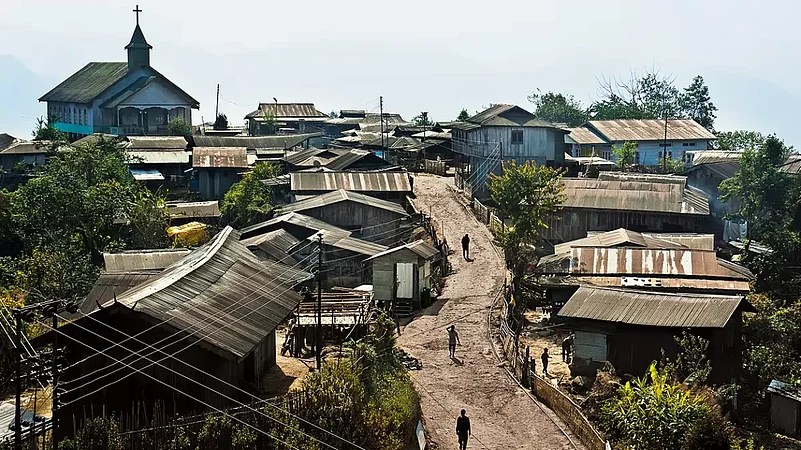
It was only on February 3, after the ENPO leaders received assurance from the Ministry of Home Affairs (MHA)—apparently from Amit Shah himself—that the body withdrew the call for boycott. The sleepy, eastern districts jumped into action. Konyak Union Vice President, HA Hongnao Konyak, tells Outlook that the call for boycotting elections had been effective. ENPO leaders, as well as tribal chiefs, have been assured by the MHA that a ‘Territory’ with a unique name will be established once the elections are over.” says Hongnau. He adds that the Home Minister will be visiting the eastern districts on February 17. Though it isn’t exactly the separate state that the Eastern Nagas had been hoping for, some council leaders say it's a 'state within a state' and leaders claim that the 'Naga Frontier Territory', as the area will purportedly be called, will have its own legislative assembly with 40 seats, its own chief minister and elections.
Tribal council leaders realise that this upcoming state election is a crucial stepping stone for Eastern Nagaland’s demand for autonomy. “The BJP is using the Frontier Nagaland issue as a bargaining chip to win support for elections in the eastern districts. Eastern tribes, in turn, are using the election as a bargaining chip to get their demands met by the Centre,” chuckles Y.P. Angam, former president of the Phom Peoples Council and ENPO talks team member in Longleng.
According to Angam, though there is widespread concern against the centre not coming through on its promise, there is another, more important election coming up in 12 months. “If they don’t support us in 2023, we will not support them in 2024,” he says.
“What we want is our own separate kitchen in the house that is India. We want to remain with India and in return we expect that the government will help us improve our cities, schools and roads,” Angam adds.
Bones of contention
Nungsanglemba Chang, the president of Chang Khulei Setshang, the apex tribal body of the Chang community, adds that underdevelopment is not the only bone of contention. He claims that unlike the Western Nagas who were ruled by the British and later by the Assam government, most eastern districts had always remained ‘inadministrate’. This, perhaps, explains the history of the ‘backwardness’ of eastern Nagas.
Unlike the western districts, the British never directly ruled in the eastern ones. It was only after the independence of India that the latter came under formal governance of any kind. Chang explains that in the imperial era, there were only three districts in Nagaland—Kohima, Mokokchung and Tuensang. While Kohima and Mokokchung were under British administration, the eastern district of Tuensang was not. While the arrival of Christianity in both western and eastern districts led to a similar trajectory of tribes transitioning from animism and pagan worship to the worship of Christ and the Bible, those in the east claim that the region did not get the benefits of British administration like trade, commerce or formal educational infrastructure.
Chang adds that the leaders from eastern tribes have also not made it to the top tiers of governance. “There are very few eastern Naga leaders in governance, policy-making and legislative positions. Though we have 20 seats, only a few eastern leaders get elected to those seats,” he opines. This time, more parties seem interested. The BJP itself has given at least seven tickets to leaders from eastern tribes. In Tuensang, its candidate, P. Bashangmongba Chang, was welcomed by huge crowds. James Imlong, a resident of Tuensang, says that many are supporting the BJP this time. “In Nagaland, we don’t vote for parties but for people. And many of the candidates this time are from our own community,” he tells Outlook.
While Nagas have always been suspicious of politicians from mainland India, many feel that the centre’s support for the Frontier Nagaland movement has ulterior motives that go beyond electoral gains.
Ao entrepreneur, Limalenden Longkumer, President of Mokokchung Press Club, feels dividing the Nagas on geographical lines could be an attempt to divide the tribes in their support for the larger, older demand of the Nagas—that of a separate autonomous Nagaland, called Nagalim, with its own flag, government and constitution, distinct from that of India.

Longkumer also denies that the Western tribes have discriminated against the eastern tribes. “There was an obvious geographical difference, the east being more remote and hilly," he states.
Many in both east and west believe that the so-called backwardness is of the east is due to the lack of strong leadership which many in the western tribes had, thanks to education arriving here about half a century before it did in the east. The Mopungchuket resident avers that many leaders in the east are still ‘innocent’ and easily led astray by promises being made by ‘outsiders’ who understand nothing of Naga identity.
The Naga Solution
Greater Nagalim includes not just Nagaland but bits of Assam, Manipur and even Myanmar, which shares a border with Nagaland’s eastern districts. Nagas believe that any land where Nagas have historically lived belongs to the Nagas. The government is trying to define the Nagas in terms of geography, says E Elu Ndang, general secretary of Naga Hoho which represents all the Naga tribes of Nagaland and other states.
Critics feel that dividing the Nagas might once again raise old ghosts and is a ploy to distract attention from the real problem - The Naga political solution.
Even to this day, on August 14, members of the Old Guard get together in Chedema and hoist the flag of Nagalim to mark the Naga Declaration of Independence.
The ‘Naga insurgency’, as it has been dubbed by successive governments, has been one of the longest running armed movements for self-determination in South East Asia that predates India’s independence. In fact, the Naga National Council (NNC), led by Angami Zapu Phizo, which had been active in the 40s and 50s, declared Nagaland an independent state on August 14, 1947, a day ahead of India becoming independent. Phizo even set up an underground guerrilla government called the Naga Federal Government which was supported by the Naga Federal Army in 1952. It was to counter this Naga army that the Government of India, under Prime Minister Jawaharlal Nehru, enacted the Armed Forces (Special) Powers Act, or AFSPA, and sent the army into the hills of Nagaland. It was only after the first ceasefire of 1964, when about a hundred armed veterans laid down their arms in the Shillong Accord, that the area became relatively peaceful. Some NNC leaders remained unhappy with this and The National Socialist Council of Nagaland (NSCN) was formed with its own underground government. In 1988, fighting over whether or not to negotiate with the Indian government, the group split into the NSCN – Isak Muivah (NSCN-IM) faction which has continued ‘peace talks’ with the government and the NSCN -Khaplang (NSCN-K) which continues to wage militancy in parts of Nagaland, Isak Chishi Swu (Sema),Thuingaleng Muivah (Tangkhul) and Khaplang (Tangkhul) being founding leaders of the respective factions. These groups are represented by several civil society organisations like the Naga Mothers’ Association, the Naga Hoho and others.
Even to this day, on August 14, members of the Old Guard get together in Chedema and hoist the sky-blue flag of Nagalim to mark the Naga Declaration of Independence.
In August 2015, the NSCN-IM, representing the Nagas in the peace talks, signed the Naga Peace Accord with the Government of India represented by R. N. Ravi, while the former was represented by the late Swu and Muivah. The ‘historic’ Framework Agreement was also signed to work out the details of the ‘Naga solution’ which would entail an autonomous status for all areas where Nagas were in the majority. However, despite several rounds of talks since the signing of the Framework Agreement, the ‘Naga Solution’ remains as elusive as ever. With the influx of the new Frontier Nagaland demand, the collective ‘Naga identity’ seems even more fractured.

Nagas believes that by promising Nagas that ‘Greater Nagalim’ will indeed be created, the centre has found itself in a tricky spot which it is now trying to wriggle out of by supporting factionalism. Some also feel that supporting the demand for Frontier Nagaland is another way of 'playing with with the emotions of Nagas". Ndang of Naga Hoho however feels that the "longer the Naga political solution is delayed, the Indian government will also not remain peaceful".
In Mokokchung, where minister Temjen Imna Along has got a ticket from the BJP, the mood is of anti-incumbency against Chief Minister Neiphiu Rio, and locals also feel that a change might be afoot. Locals feel that this election has garnered too much interest but insists that Greater Nagalim is still the biggest demand of the Nagas as a united front. “Nagaland will not become another Tripura or Meghalaya,” a Mokokchung resident stated.
Meanwhile, in Tuensang, candidates have started campaigning, and several bodies, including the Eastern Nagaland Women’s Organisation, Eastern Nagaland Students’ Union and other regional and tribal councils and civil society bodies have been tasked with ensuring smooth, violence-free elections.
A state government official in Tuensang from the Chang community tells Outlook on the condition of anonymity that had the ENPO not lifted its ban, there could have been a lot of trouble and he’s glad that the MHA met the ENPO’s demands.
“There are many factions involved and infighting among tribes is not a good thing. We are all united in the effort to get Nagalim and the Naga solution. But, for now, we in the east have to ensure that we get basic development,” he states.
Changing ways
Amid the support for the centre and calls for integration, there are murmured concerns about preserving Naga identity.
Remnants of the old Naga ways lie mingled with modern-day everydayness, fading slowly into conventionality as signboards of ‘Trade Expos’ by the central government crowd out the town square, hiding the tall qui-quis put up by the locals to mark their village morungs (youth dormitories). Saffron flags fly off the tips of temple spires overlooking churches, their numbers increasing each year, along with the number of Hindu migrants and traders who pour in to do business in the state. Legends of Rani Gaidinliu, a Naga freedom fighter, now endorsed by the RSS, are competing with memories of Mommolla, the mythified girl who was sacrificed by her mother to save the Nagas from drowning.
Much like in the fictional town of Macondo in Marquez’s One Hundred Years Of Solitude, the people of Nagaland seem to easily believe in the bizarre but struggle with the mundane. It is perhaps the reason why Nagas in the east are not good at ‘doing business’, or so claims Puran Chand Gupta, grocery store owner and president of a Hindu civil body in Nagaland. “Nagas don’t know how to run shops or do business. It is not in their culture. So Hindus are able to set up shops here. We also help the locals here to set up their own shops now with small cash advances and tips of the trade,” Gupta tells Outlook. He adds that at least in Tuensang, the Hindu minority has never faced any problems from the Nagas and that all was well. “We go to their homes when they invite us on festivals,” he says, but adds that they carry their own food to the party.
Though he doesn’t vote in Nagaland, several Hindus do and the moneyed Marwari trader community in Nagaland has been silently supporting the demand for Frontier Nagaland as well. “It will be good for business,” Gupta states.
In Mon, the Konyaks are building a Mothers’ Park to commemorate the killing of 14 locals from Oting village by the Indian armed forces on December 4, 2021 and the mood is a little different. After the tragedy, all factions in Nagaland seemed to have stood together against oppressive forces and the Indian government, demanding justice for the deaths of their own. But Mon residents say that the issue right now is on the back burner. They know that they must pick their battles. Now is not the time to talk about justice.
(This appeared in the print edition as "Sovereignty Or Identity? The Frontier Of A New Divide")
Rakhi Bose in Tuensang







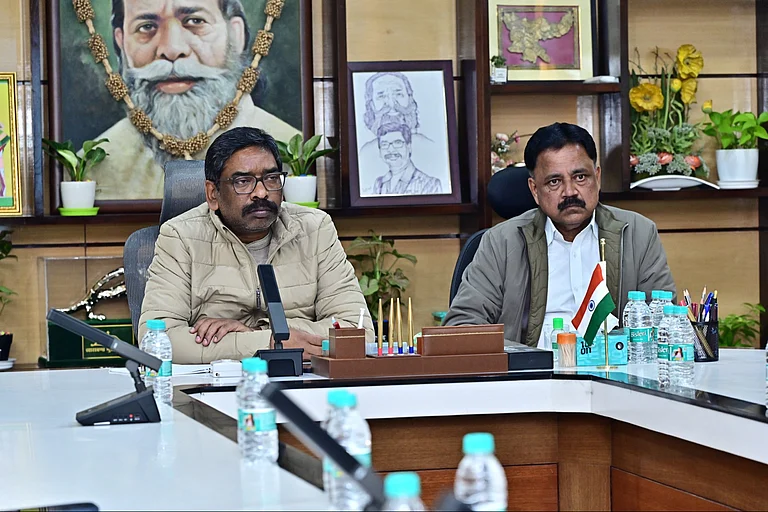
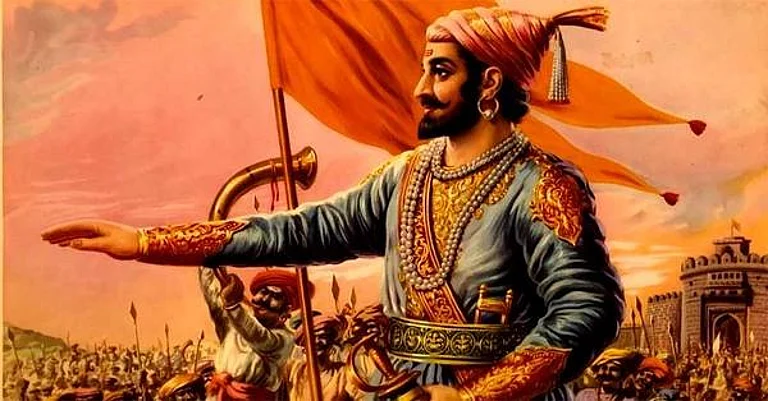
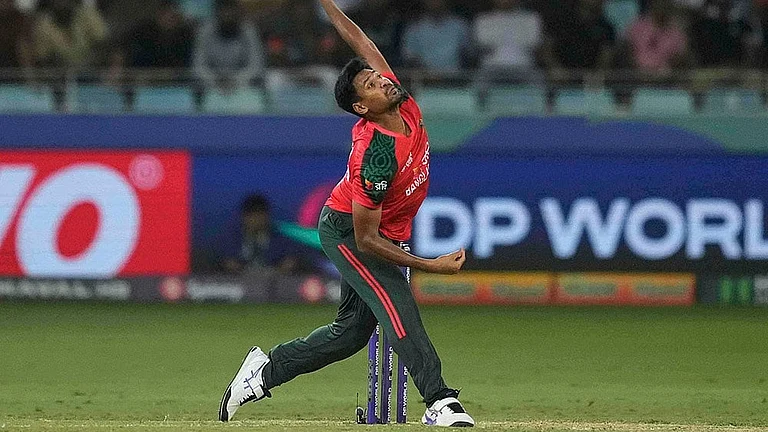
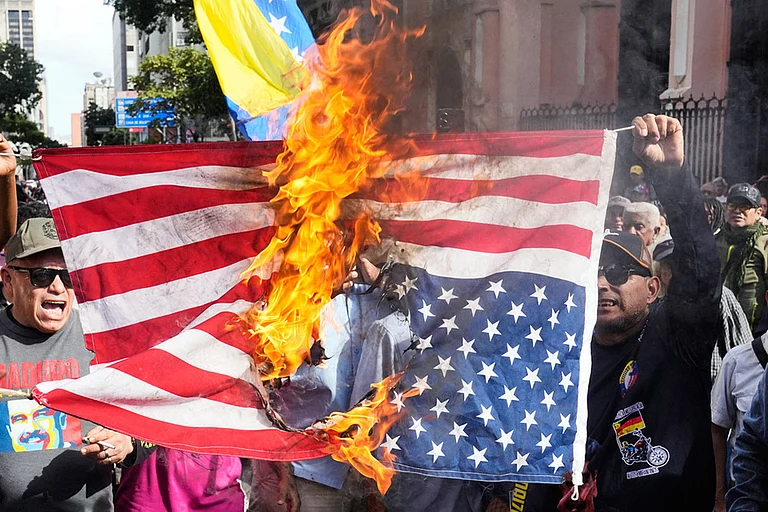

.png?auto=format%2Ccompress&fit=max&format=webp&w=376&dpr=2.0)













